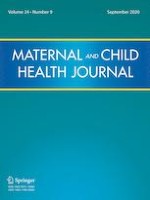01-09-2020 | Opioids
Antenatal Admissions Among Women with Opioid-Affected and Non-Opioid-Affected Deliveries
Published in: Maternal and Child Health Journal | Issue 9/2020
Login to get accessAbstract
Objectives
(1) To compare the prevalence of antenatal admissions and mean length of stay among women with opioid-affected and non-opioid-affected deliveries; (2) examine predictors of admission; and (3) describe the most common discharge diagnoses in each group.
Methods
Using data from seven states in the State Inpatient Databases for varying years between 2009 and 2014, delivery hospitalizations among women 18 years of age and older were identified and classified as opioid-affected or non-opioid-affected. Antenatal admissions were linked to deliveries. The antenatal admission ratio and mean length of stay for each group were calculated; the percentage of deliveries in each group with no, any, one, two, or three or more antenatal admissions were compared with t-tests. Logistic regression models estimated odds of any antenatal admission, stratified by opioid-affected and non-opioid-affected deliveries. Frequencies were tabulated for the ten most common discharge diagnoses in each group.
Results
Of 2,684,970 deliveries, 14,765 were opioid-affected. Admissions among women with opioid-affected deliveries were more prevalent (26.4 per 100 deliveries) compared to 6.7 among women with non-opioid-affected deliveries and were associated with a 1.5-day longer mean length of stay. The presence of a behavioral health condition was associated with higher odds of antenatal admission in both groups, with a particularly strong association among women with opioid-affected deliveries. Six of the ten most common diagnoses for admissions prior to opioid-affected deliveries were behavioral health-related.
Conclusions for Practice
These results highlight the importance of addressing the large burden of behavioral health conditions among pregnant women, especially those with opioid dependence and abuse.





